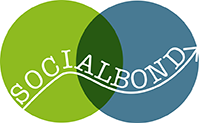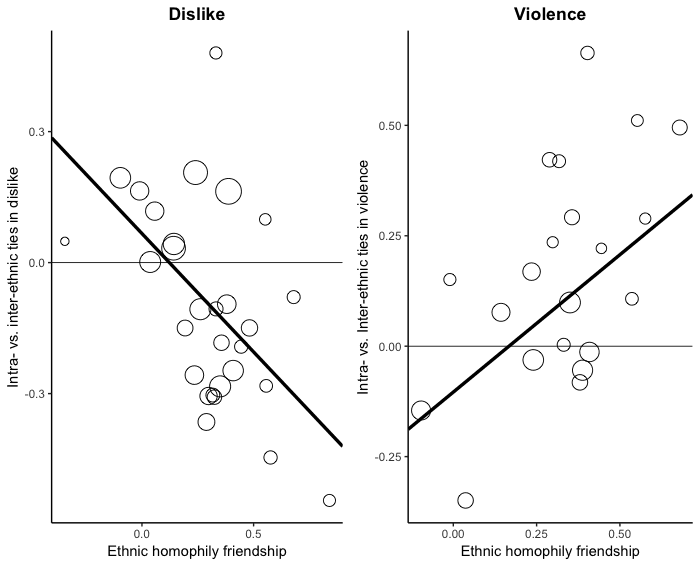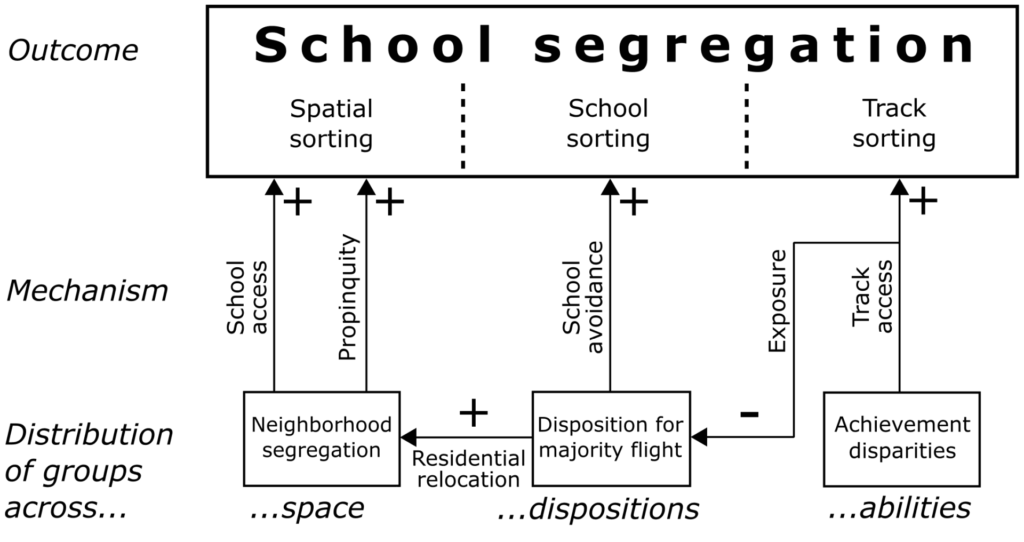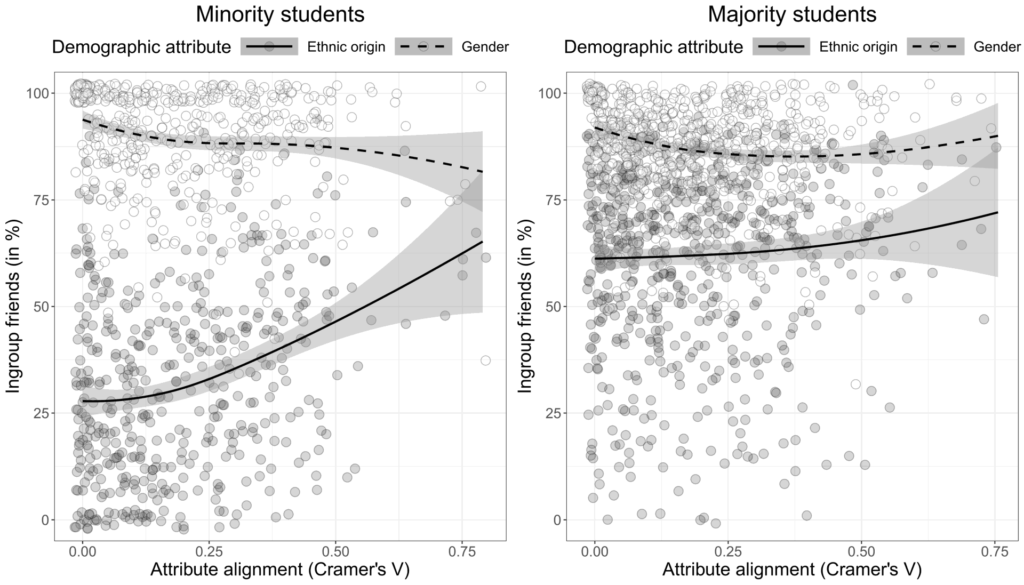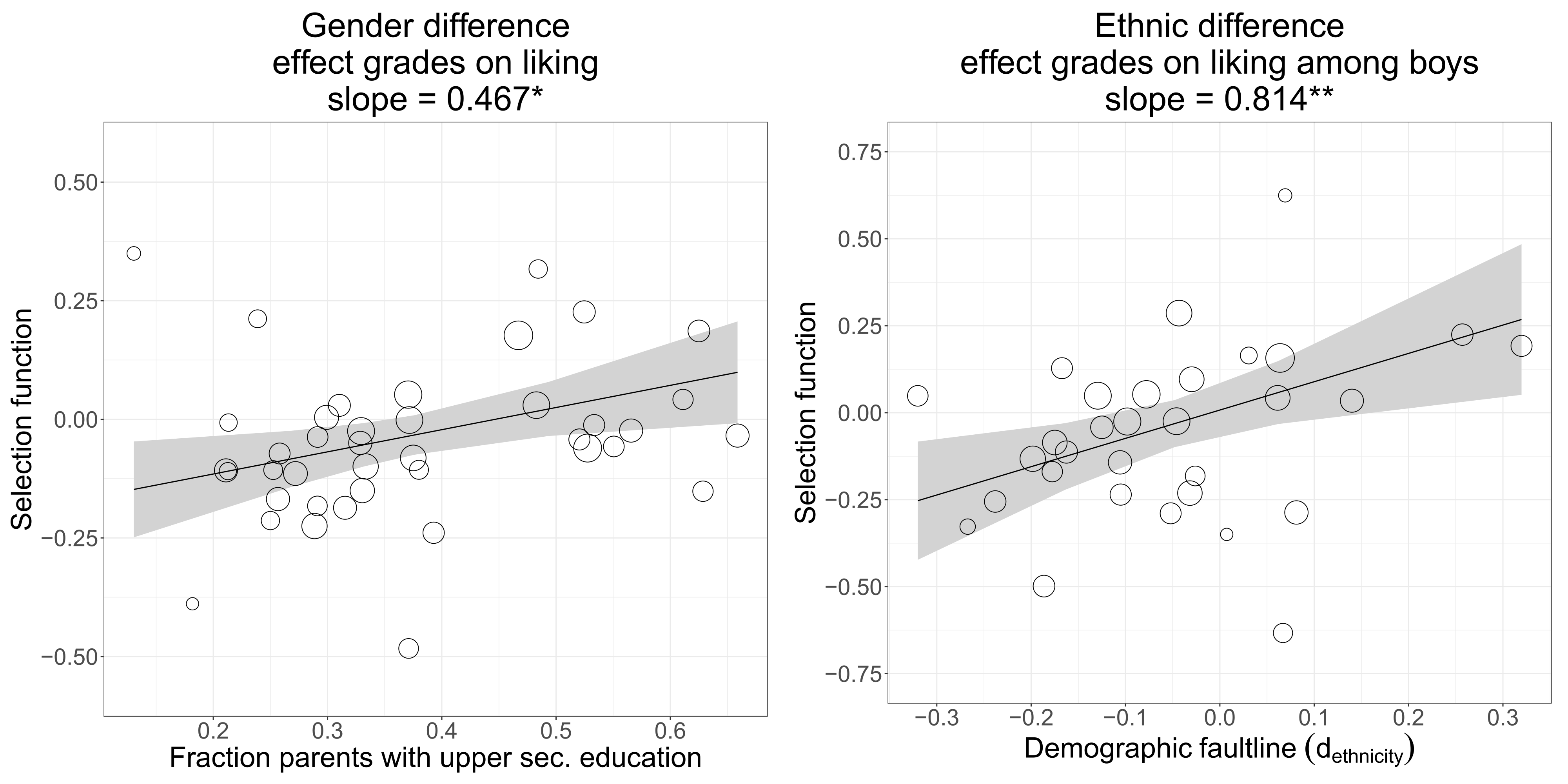How often do students use ethno-racial labels to describe friendship cliques in their school grade?
When asked to identify and describe groups or cliques of students in their school grade who are hanging out together, students in a diverse German metropolitan area rarely used ethno-racial labels. Moreover, ethnic segregation in friendships (“ethnic homophily”) and the reverse pattern in dislike relations (“ethnic heterophobia”) were not associated with a more frequent use of ethno-racial labels.
Full paper: http://buff.ly/3LAs6PX
How common and how problematic is inter-ethnic violence in schools?
Inter-ethnic violence in schools is relatively rare. Moreover, it is more likely to occur in schools where there is a greater mix of friendships. In these contexts, this may be a natural by-product of social proximity. To reduce prejudice and antipathy, schools should promote friendship across ethnic divides.
Full paper: https://doi.org/10.1016/j.socnet.2019.04.004
Interview in German: https://www.zeit.de/2019/41/gewalt-schulen-pruegelei-herkunft-schulformen
How does ethnic stratification in the school system affect the identities and affiliations of minority youth?
Ethnic inequality in access to prestigious schools affects minority students’ identities and social relationships with their classmates. In areas where adolescents with a migration background rarely attend prestigious schools, their attendance at these schools is associated with assimilative tendencies and pressures. In contrast, where minority students are also well represented in the more prestigious schools, identification with the national majority becomes less relevant.
Full paper: http://www.kroneberg.eu/wp-content/uploads/2021/06/Kruse-Kroneberg-2019.pdf
Non-technical summary: http://www.wipsociology.org/2020/01/21/unequal-school-access-shapes-ethnic-boundaries-in-students-identities-and-friendships/#more-1948
How do tracked school systems both increase and limit ethnic segregation?
School reforms changing tracked school systems into more comprehensive school systems may have a weaker desegregating impact than expected. The reason is that stronger between-school ability tracking is not only associated with stronger ethnic sorting into school types (increasing segregation) but also limits the ability majority members to avoid exposure to minority members (decreasing segregation).
Full paper: https://doi.org/10.1093/sf/soy099
How can school administrators improve the assignment of students to school classes?
When classmates of other ethnic origin tend to be of the opposite sex, minority students will have mostly ingroup friends. Moreover, when majority group classmates tend to be of the opposite sex, minority students will, over time, become less likely to identify as a member of the nation. Hence, school administrators can affect identity formation by making sure that gender and ethnic boundaries crisscross each other when admitting students to schools and when assigning them to classrooms.
Full paper: https://doi.org/10.1093/esr/jcab013
Policy Brief: https://econtribute.de/RePEc/ajk/ajkpbs/ECONtribute_PB_018_2021.pdf
How prevalent are oppositional cultures and when do they follow ethnic or gender boundaries?
Different lines of research have argued that specific groups, such as boys or ethnic minorities, are more prone to develop an anti-school culture than others, leading to group differences in the social acceptance of high performers. We seek to identify school characteristics that promote gender-based or ethnicity-based oppositional cultures. We analyze data from a four-wave network panel survey among more than 4000 students in Germany. Group-based oppositional cultures in which students like high performers less are rare. In less resourceful schools, boys tend to evaluate high-performing peers less positively than girls do. In schools where ethnic minority boys are socio-economically disadvantaged, they tend to evaluate high performers less positively than majority boys do.
Full paper: https://doi.org/10.1016/j.socnet.2021.11.004
